What Are Electric Transformers and How Do They Work?
Have you ever wondered how electricity from power plants reaches your home safely? The answer lies in a crucial device: the electric transformer. Without it, our modern electrical grid wouldn’t exist.
Electric transformers are devices that change the voltage of electricity. They work by using electromagnetic induction to transfer energy between two or more circuits. Transformers are essential for efficient power transmission and safe electricity use in our homes and businesses.
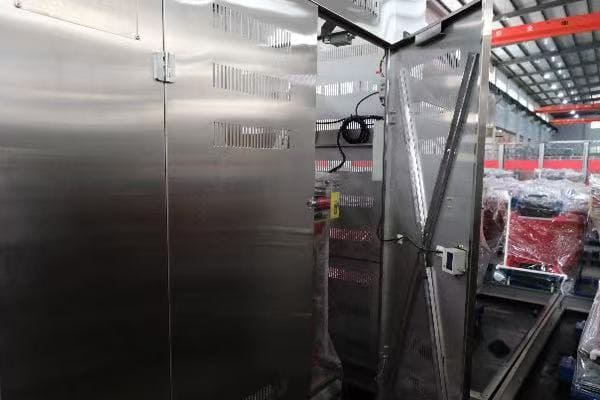
As someone who has worked in the power industry for years, I’ve seen firsthand how transformers shape our electrical systems. Let’s dive deeper into the world of electric transformers and explore their fascinating workings.
The Basics of Electric Transformers: Definition and Core Functions?
Imagine trying to drink from a fire hose. That’s what using electricity straight from a power plant would be like. Transformers are the devices that make electricity usable for us.
An electric transformer is a static device that transfers electrical energy from one circuit to another by electromagnetic induction. Its core functions are to increase (step up) or decrease (step down) voltage levels and to isolate circuits.
Let me break down the basics of electric transformers for you, based on my years of experience in the field.
What Is an Electric Transformer?
An electric transformer is a device with no moving parts. It uses the principle of electromagnetic induction to change voltage levels. This ability is crucial for our power systems.
Core Functions of Electric Transformers
Transformers serve several key functions in our electrical systems:
-
Voltage Transformation: This is the primary function. Transformers can increase or decrease voltage levels as needed.
-
Current Transformation: As voltage changes, current changes inversely to maintain power.
-
Impedance Transformation: Transformers can change the impedance level between circuits.
-
Isolation: Transformers can electrically isolate two circuits while still transferring power between them.
Types of Transformers Based on Function
We can classify transformers based on their primary function:
| Type | Function | Application |
|---|---|---|
| Step-Up | Increases voltage | Power plants to transmission lines |
| Step-Down | Decreases voltage | Substations to homes |
| Isolation | Separates circuits | Safety in electronic devices |
| Autotransformer | Slight voltage adjustments | Voltage regulation |
Why Are Transformers Important?
Transformers are the backbone of our electrical grid. They allow us to:
- Transmit power efficiently over long distances by stepping up voltage.
- Use electricity safely in our homes by stepping down voltage.
- Isolate different parts of electrical systems for safety and control.
In my work designing power systems, I’ve seen how crucial transformers are. Without them, we couldn’t have the widespread, safe electrical systems we rely on today. They’re the unsung heroes of our electrified world.
Electromagnetic Induction: The Principle Behind Transformer Operation?
Have you ever been curious about how transformers work their magic? The secret lies in a principle discovered nearly 200 years ago: electromagnetic induction.
Electromagnetic induction is the process by which a changing magnetic field creates an electric current in a nearby conductor. This principle is the foundation of how transformers work, allowing them to transfer energy between circuits and change voltage levels.
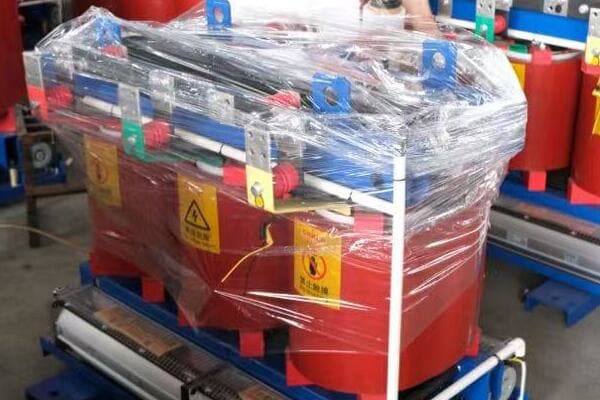
Let me explain this fascinating principle and how it applies to transformers, based on my experience in the field.
The Discovery of Electromagnetic Induction
Michael Faraday discovered electromagnetic induction in 1831. This discovery changed the world of electricity forever. Here’s how it works:
- A changing magnetic field creates an electric field.
- This electric field can create a current in a nearby conductor.
How Electromagnetic Induction Works in Transformers
In a transformer, we use electromagnetic induction to transfer energy between two coils. Here’s the process:
- Primary Coil: We apply an alternating current to this coil.
- Changing Magnetic Field: The alternating current creates a changing magnetic field.
- Iron Core: This concentrates and directs the magnetic field.
- Secondary Coil: The changing magnetic field induces a voltage in this coil.
The Transformer Equation
The relationship between the primary and secondary coils is described by the transformer equation:
Vs / Vp = Ns / Np
Where:
- Vs = Secondary Voltage
- Vp = Primary Voltage
- Ns = Number of turns in Secondary Coil
- Np = Number of turns in Primary Coil
This equation shows that the ratio of voltages is equal to the ratio of turns in the coils.
Practical Applications of Electromagnetic Induction in Transformers
| Application | How It Uses Induction | Example |
|---|---|---|
| Step-Up Transformer | More turns in secondary coil | Power plant to transmission lines |
| Step-Down Transformer | Fewer turns in secondary coil | Substation to homes |
| Isolation Transformer | Equal turns, separate coils | Safety in medical equipment |
Efficiency and Power Conservation
One of the great things about transformers is their high efficiency. In an ideal transformer:
Power In = Power Out
Or: Vp Ip = Vs Is
Where Ip and Is are the primary and secondary currents.
In reality, transformers aren’t 100% efficient due to factors like core losses and copper losses. But modern large transformers can achieve efficiencies over 99%.
In my work, I’ve seen how understanding these principles is crucial for designing efficient power systems. It’s amazing how this simple principle, discovered almost two centuries ago, still forms the basis of our modern electrical grid.
Anatomy of a Transformer: Primary Coils, Secondary Coils, and Iron Core?
Have you ever wondered what’s inside a transformer? These devices may look simple from the outside, but their internal structure is key to their function.
A transformer consists of three main parts: the primary coil, the secondary coil, and the iron core. The primary coil receives the input voltage, the secondary coil outputs the transformed voltage, and the iron core enhances the magnetic coupling between the coils.
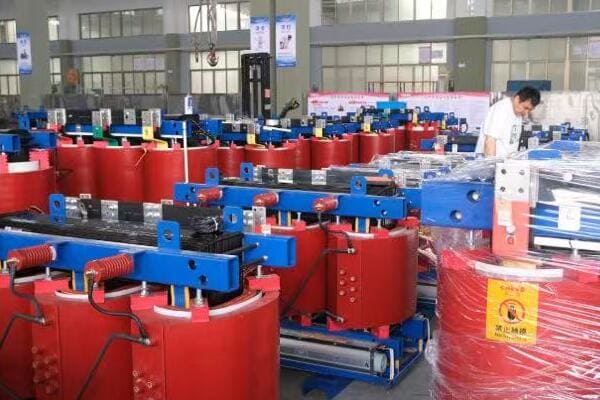
Let me take you on a tour of a transformer’s anatomy, based on my years of experience working with these devices.
The Primary Coil: Where It All Begins
The primary coil is where we input the electrical energy. Here’s what you need to know:
- Function: It receives the input voltage and creates a changing magnetic field.
- Construction: It’s made of insulated copper wire wound around one leg of the iron core.
- Turns: The number of turns in this coil determines the input voltage rating.
The Secondary Coil: Where Transformation Happens
The secondary coil is where we get our transformed voltage. Here are its key features:
- Function: It receives the changing magnetic field and produces the output voltage.
- Construction: Like the primary, it’s made of insulated copper wire on the iron core.
- Turns: The number of turns here, compared to the primary, determines the voltage change.
The Iron Core: The Magnetic Highway
The iron core is crucial for efficient operation. Here’s why:
- Function: It provides a path for the magnetic field, increasing the coupling between coils.
- Material: Usually made of laminated silicon steel to reduce eddy current losses.
- Types: Can be core-type (coils around outside) or shell-type (coils inside).
Putting It All Together: How These Parts Work in Harmony
Let’s look at how these parts work together:
| Component | Role | Interaction |
|---|---|---|
| Primary Coil | Creates magnetic field | Induces current in secondary |
| Iron Core | Directs magnetic field | Enhances coupling between coils |
| Secondary Coil | Receives magnetic field | Produces output voltage |
Additional Components for Efficiency and Safety
While the coils and core are the main parts, transformers often have additional components:
- Insulation: Prevents short circuits between turns and layers.
- Cooling System: Oil or air cooling to manage heat from losses.
- Tap Changer: Allows for small adjustments in turns ratio.
- Bushings: Insulated passages for connections to enter/exit the transformer.
The Importance of Proper Design
In my work designing transformers, I’ve learned that the relationship between these components is crucial. Here are some key considerations:
- Core Size: Must be large enough to handle the magnetic flux without saturation.
- Wire Gauge: Must be thick enough to handle the current without overheating.
- Insulation: Must withstand the voltage stress between turns and layers.
- Cooling: Must be adequate to dissipate heat and maintain efficiency.
Understanding the anatomy of a transformer is crucial for designing efficient and reliable power systems. Each component plays a vital role, and the interplay between them determines the transformer’s performance. It’s this intricate dance of electricity and magnetism that allows transformers to play their crucial role in our power systems.
Types of Electric Transformers: From Step-Up to Step-Down and Beyond?
Did you know that not all transformers are created equal? The world of transformers is diverse, with each type serving a specific purpose in our electrical systems.
Electric transformers come in various types, including step-up, step-down, isolation, and autotransformers. Each type has a specific function, from increasing voltage for long-distance transmission to providing electrical isolation for safety purposes.
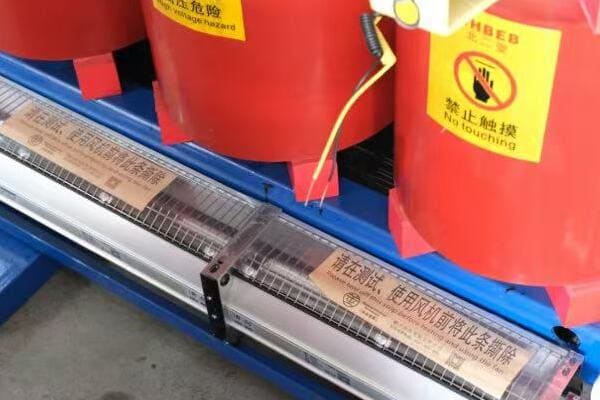
Let me guide you through the different types of transformers I’ve encountered in my career, and explain how each plays a crucial role in our power systems.
Step-Up Transformers: Powering Long-Distance Transmission
Step-up transformers are the giants of the transformer world. Here’s what you need to know:
- Function: They increase voltage for long-distance power transmission.
- Location: Typically found at power plants.
- Ratio: Secondary coil has more turns than the primary.
- Importance: They reduce power losses in transmission lines.
Step-Down Transformers: Bringing Power to Your Home
Step-down transformers are the workhorses of power distribution. Let’s break them down:
- Function: They decrease voltage for local distribution and use.
- Location: Found at substations and on utility poles.
- Ratio: Primary coil has more turns than the secondary.
- Importance: They make electricity safe for use in homes and businesses.
Isolation Transformers: Safety First
Isolation transformers play a crucial role in electrical safety. Here’s how:
- Function: They provide electrical isolation between circuits.
- Ratio: Often 1:1, with equal primary and secondary turns.
- Use: Common in medical equipment and sensitive electronics.
- Importance: They prevent ground loops and protect against electric shock.
Autotransformers: Efficiency in Small Changes
Autotransformers are unique in their design. Here’s what sets them apart:
- Function: They make small adjustments to voltage levels.
- Design: Use a single winding for both primary and secondary.
- Efficiency: More efficient than two-winding transformers for small voltage changes.
- Use: Common in voltage regulators and motor starters.
Instrument Transformers: Measuring and Protecting
Instrument transformers are the eyes and ears of our power systems:
- Types: Current transformers (CTs) and potential transformers (PTs).
- Function: They step down current or voltage for measurement and protection devices.
- Accuracy: Highly accurate for precise measurements.
- Importance: Essential for metering and protective relaying.
Comparison of Transformer Types
Let’s compare these types:
| Type | Primary Use | Voltage Change | Key Feature |
|---|---|---|---|
| Step-Up | Power Transmission | Increases | Enables long-distance transmission |
| Step-Down | Power Distribution | Decreases | Makes power safe for local use |
| Isolation | Safety | No change | Provides electrical isolation |
| Autotransformer | Voltage Adjustment | Small change | Efficient for small adjustments |
| Instrument | Measurement | Large decrease | High accuracy |
Choosing the Right Transformer
In my work designing power systems, choosing the right transformer is crucial. Here are some factors I consider:
- Purpose: What’s the primary function needed?
- Voltage Levels: What are the input and required output voltages?
- Power Rating: How much power needs to be transformed?
- Environment: Where will the transformer be installed?
- Efficiency: How important is minimizing losses?
- Cost: What’s the budget for the project?
Understanding the different types of transformers and their applications is essential for creating efficient and reliable power systems. Each type has its strengths, and using the right transformer for the job can make a significant difference in system performance and safety.
Transformers in Action: Applications in Power Transmission and Distribution?
Have you ever stopped to think about the journey electricity takes from a power plant to your home? Transformers play a crucial role at every step of this journey.
Transformers are essential in power transmission and distribution. They enable efficient long-distance power transmission by stepping up voltage, facilitate power distribution by stepping down voltage, and ensure safe electricity use in our homes and businesses.
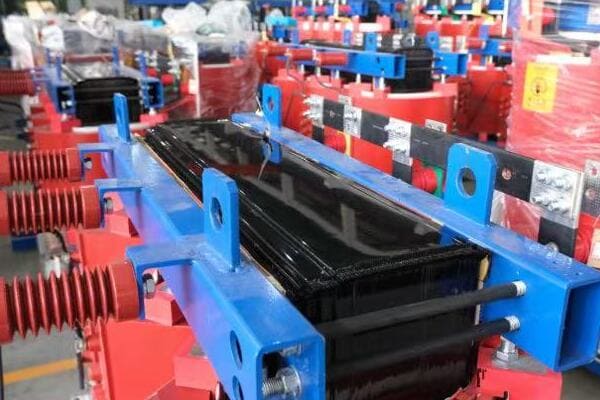
Let me walk you through the applications of transformers in power systems, based on my experience in the field.
Power Generation: The Journey Begins
At power plants, electricity starts its journey:
- Generator Voltage: Typically 11kV to 25kV.
- Step-Up Transformer: Increases voltage to 155kV-765kV for transmission.
- Purpose: Higher voltage reduces power losses over long distances.
Transmission: The Long-Distance Journey
Transformers play a crucial role in long-distance power transmission:
- High Voltage Transmission: Typically 155kV to 765kV.
- Substations: Use transformers to adjust voltage for different transmission lines.
- HVDC Converters: Special transformers used in High Voltage Direct Current systems.
Sub-transmission: The Middle Mile
Sub-transmission systems bridge the gap between transmission and distribution:
- Voltage Levels: Typically 33kV to 155kV.
- Substations: Use transformers to step down voltage from transmission levels.
- Purpose: Supplies power to distribution substations in cities and industrial areas.
Distribution: Bringing Power to Neighborhoods
Distribution systems deliver power to end-users:
- Primary Distribution: Typically 4kV to 33kV.
- Distribution Transformers: Step down voltage to 120V/240V for residential use.
- Pole-mounted Transformers: Common sight in many neighborhoods.
End-User Applications: Power in Our Hands
Even at the end-user level, transformers have important applications:
- Isolation Transformers: Used in sensitive electronic equipment.
- Voltage Optimizers: Adjust voltage for improved efficiency in homes and businesses.
- Uninterruptible Power Supplies (UPS): Use transformers for power conditioning.
Transformer Applications Across the Power System
Let’s summarize the applications:
| Stage | Transformer Type | Voltage Change | Purpose |
|---|---|---|---|
| Generation | Step-Up | 20kV to 765kV | Enable long-distance transmission |
| Transmission | Step-Up/Step-Down | 155kV to 765kV | Efficient power transfer |
| Sub-transmission | Step-Down | 765kV to 33kV | Supply distribution substations |
| Distribution | Step-Down | 33kV to 120/240V | Deliver power to end-users |
| End-User | Various | Various | Safety, efficiency, power quality |
Challenges and Innovations
In my work, I’ve encountered several challenges in transformer applications:
- Efficiency: Constantly working to reduce losses, especially in distribution transformers.
- Smart Grids: Developing transformers with communication capabilities for smart grid integration.
- Renewable Energy: Designing transformers to handle the variable output of renewable sources.
- Size and Weight: Innovating to createsmaller, lighter transformers for urban environments.
- Environmental Concerns: Developing eco-friendly insulating materials to replace traditional transformer oil.
The Future of Transformers in Power Systems
As we look to the future, transformers will continue to evolve:
- Solid-State Transformers: These could revolutionize power distribution with their ability to handle DC and AC.
- High-Temperature Superconducting Transformers: These promise near-zero resistance and very low losses.
- Smart Transformers: With built-in intelligence, these will play a key role in the smart grids of the future.
In my years of experience, I’ve seen transformers evolve from simple devices to sophisticated pieces of technology. They remain the unsung heroes of our power systems, quietly enabling the electrified world we live in.
Conclusion
Electric transformers are the backbone of our power systems. They enable efficient power transmission, safe distribution, and countless applications in our daily lives. From the massive transformers at power plants to the small ones in our electronic devices, these amazing machines keep our world running.
Free CHBEB Transformer Catalog Download
Get the full range of CHBEB transformers in one catalog.
Includes oil-immersed, dry-type, pad-mounted, and custom solutions.
Quick Message
Request A free quote
We'd like to work with you
- +86 15558785111
- [email protected]
- +86 15558785111
What We Do
CHINA BEI ER BIAN (CHBEB) GROUP, with 218 million in registered capital, originated from Beijing Beierbian Transformer Group. Headquartered in Beijing for R&D, it operates major production bases in Nanjing and Yueqing, producing high-quality products.
Latest Product
address
BeiJing
No 3,RongJing East Road,BeiJing Economic Technological Development Area,BeiJing,China
JiangSu
No 7️Xiangfeng Road,Jiangning,NanJing,JiangSu,China
WenZhou
No.211, Wei 16 Road, Industrial Zone, Yueqing, Wenzhou, Zhejiang, China.
XiangYang Industrial Zone ,YueQing,WenZhou,ZheJiang,China
contact us
- [email protected]
- +86 13057780111
- +86 13057780111
- +86 15558785111
Copyright © Bei Er Bian Group



